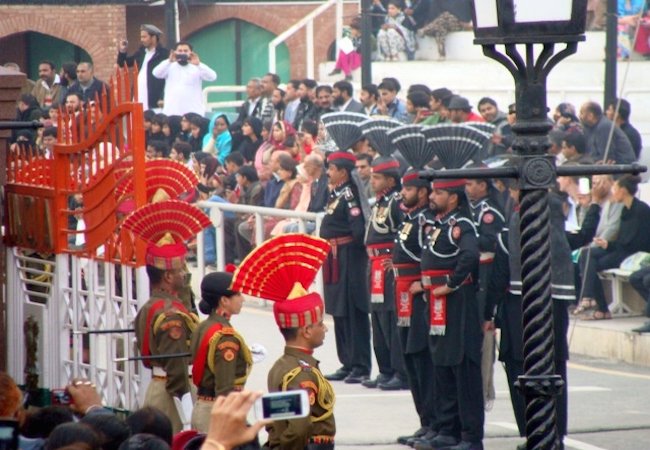South Asia’s externalized demons

As the Indian and Pakistani militaries yet again trade ominous threats with one another, the Line of Control is once more witness to a sustained and significant increase in cross border shelling from both sides. Coupled with reports of unusual levels of movement and deployment on India’s side of the LOC, there is a certain sense of unease and uncertainty spreading throughout the entire region. With the recent turmoil that has taken hold of both countries’ domestic politics, the risks of even the smallest missteps escalating to a full-blown conflict are at the present extremely high for both nuclear weapons states. This is even more worrisome when considering how demonizing each other amidst the drum beats of war, represents a surefire way of uniting an internally divided polity, against an already established and historic outside enemy.
This very notion forms the crux of the Pakistani government’s official stance on the matter as it has for months attempted to internationalize the possibility of India conducting a false flag operation as a potential casus belli. Both Pakistan’s military spokesman as well as its foreign minister have been clear in their statements in which they have linked India’s aggressive posturing against Pakistan as simply an extension of the BJP’s divisive communal politics from domestic towards regional fault lines. They point out that the recent unrest that has resulted from India’s controversial Citizenship Amendment Bill stands perhaps as the clearest vindication of their argument, as the long simmering communal tensions that have plagued India’s secular democracy finally come to fore. This for instance is evident in how the ruling BJP has embarked on its populist campaign of systematically eroding the rights of India’s minorities, especially its population of over 200 million Muslims. Citing specifically the deliberate exclusion of Muslims from the Citizenship Amendment Bill (CAB) as well as from India’s already highly controversial National Register of Citizens (NRC), Pakistan’s stance has been framed around showing how the BJP in habitually and willfully stoking communal tensions has given rise to a distinct form of fascism. A kind of fascism which while harking back to some of the worst excesses of Nazi Germany or Mussolini’s Italy stands as a precursor to what helped ideologically fuel the unprecedented hate and genocide that had accompanied the Second World War.
On the other side of the most militarized border of the world, Pakistan too can be argued as being in the midst of a kind of internal political turmoil that is uniquely characteristic of its own tumultuous history. In what has been widely perceived as yet another episode in the long saga of the country’s volatile civil military relations, recent steps taken by the country’s judiciary to reassert its authority over certain domains of statehood has been widely portrayed as a direct challenge to the country’s powerful military. This in an era where despite reassurances from both the elected government and the military repeatedly espousing that both ‘are on the same page’; the judiciary’s re-assertion of its legal and constitutional mandate have ignited a certain controversy of sorts over the power and accountability of Pakistan’s powerful Army Chiefs, both sitting and old. This for instance is evident in the Supreme Court taking issue over the grounds on which the incumbent army chief General Bajwa was granted an extension in his tenure. Yet perhaps the biggest controversy to have come out of Pakistan’s judiciary this last week is the death sentence awarded to former president and military dictator, Gen. Musharraf on a 7-year-old case of treason. The death sentence has been widely criticized by both the ruling government as well as the military as not only ‘vindictive and uncalled for’ but highly suspect in its present timing considering the state of regional tensions. While the verdict and its subsequent appeals are a matter for the country’s top courts to decide, this latter point considering their timing with reference to the regional situation is highly interesting. This is because in externalizing the threat to Pakistan’s institutional unity, the argument has been based on uniting the country against a common enemy; the same way the BJP has been doing as part of its own domestic agenda when demonizing Pakistan.
These parallel almost similar strategies, while not entirely new, represent a dangerous narrative that is being set by both countries which in themselves can be used to justifying the use of force, be it at the conventional or even sub-conventional levels. However, there is still a major difference between both countries approaches that is worth noting. While the Pakistani military is simply pointing out the necessity of maintaining political and institutional stability as a necessary precursor to maintaining economic growth and regional security, India’s approach is tied to radically altering the status quo not only with regard to its internal politics, but also the international system as whole when considering its designs of becoming a major global power. Just like the second world war’s axis powers had embarked upon in their quest in setting up a Eurocentric world order built on certain fascist principles of exclusivity.






